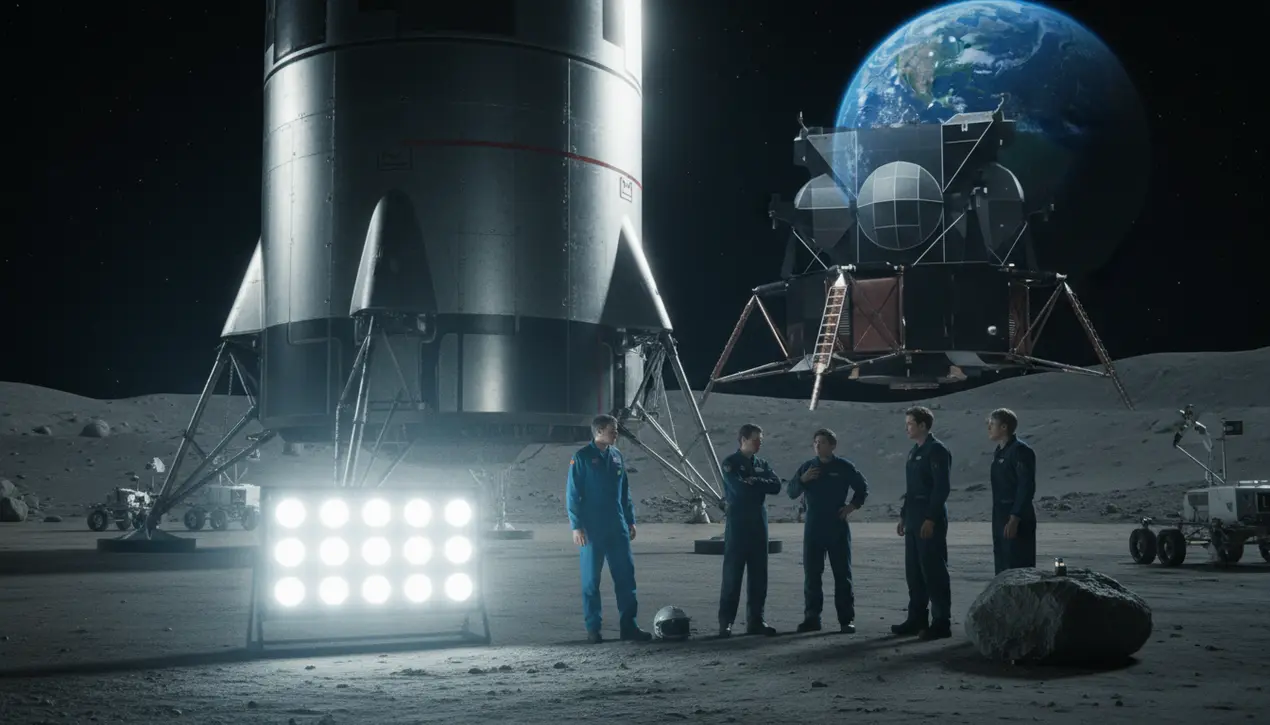
Sciencespace & astronomyNASA Missions
What would a simplified Starship plan for the Moon look like?
TH
Thomas Green
2 hours ago7 min read4 comments
The challenge of aligning NASA's methodical, safety-first culture with SpaceX's agile, risk-tolerant engineering philosophy represents one of the most fascinating dynamics in modern space exploration, a tension as vast as the void between Earth and the Moon itself. At the heart of this bureaucratic and technical ballet is the Starship lunar lander, a vehicle that is not merely a spacecraft but a paradigm shift, a stainless-steel leviathan whose sheer scale and proposed capabilities dwarf the spidery Lunar Module of the Apollo era.The core dilemma, as hinted, is that finding a simplified operational plan that satisfies both entities is akin to getting two different species to agree on a single habitat; NASA, born from the NACA and tempered by the tragedies of Apollo 1, Challenger, and Columbia, operates on a principle of exhaustive redundancy and proven reliability, where every circuit and weld is documented and tested within an inch of its life. In stark contrast, SpaceX, forged in the fires of Falcon 1 failures and rapid iteration, embraces a 'test, fly, fail, fix' mantra, building rockets with the same disruptive ethos that Silicon Valley applies to software, viewing explosive RUDs (Rapid Unscheduled Disassemblies) not as catastrophes but as expensive yet invaluable data points.So, what would a compromise, a truly simplified Starship plan for the Moon, actually entail? It would likely necessitate a radical re-scoping of the initial Artemis missions, perhaps forgoing the ambition of a permanently crewed base for a series of shorter, Apollo-style sorties, thereby reducing the logistical nightmare of sustained human presence. This simplified version might see a dedicated lunar Starship, stripped of the aerodynamic surfaces needed for Earth re-entry, acting as a pure lander, launched directly into a translunar injection by a Super Heavy booster without the complex orbital refueling dances that currently represent a significant technical and scheduling hurdle.NASA would undoubtedly demand an unprecedented number of uncrewed test landings on the lunar surface, a series of robotic pathfinders to validate the landing systems, life support, and structural integrity in the harsh regolith environment before ever committing human lives. From SpaceX's perspective, simplification might mean being granted more autonomy in its development and testing processes, with NASA acting as a high-level requirements manager rather than a hands-on micromanager, a relationship model that has proven successful with the Commercial Crew program.The specter of international partners adds another layer of complexity; the European Space Agency, JAXA of Japan, and Canada's CSA are all invested in the Gateway lunar station, and a simplified plan that bypasses this orbital outpost would require delicate diplomatic renegotiations. Furthermore, the very physics of the Moon presents an immutable challenge; the long lunar night, lasting fourteen Earth days, poses a severe power and thermal control problem for any Starship hoping to survive on the surface for an extended period, a hurdle that a simplified mission profile would have to cleverly circumvent by timing landings for the lunar day.The ultimate shape of a compromise will be a testament to whether the old space guard and the new space vanguard can truly merge their DNA, creating a hybrid approach that is both audaciously innovative and fundamentally safe, a necessary evolution if humanity is to transition from being mere visitors to the Moon to becoming permanent residents. The success or failure of this high-stakes negotiation will set the precedent for all future public-private partnerships, not just for lunar exploration, but for the eventual human journey to Mars.
#SpaceX
#NASA
#Moon mission
#Starship
#collaboration
#featured
Stay Informed. Act Smarter.
Get weekly highlights, major headlines, and expert insights — then put your knowledge to work in our live prediction markets.
Related News
Comments
Loading comments...
© 2025 Outpoll Service LTD. All rights reserved.